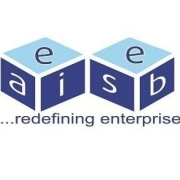Mulesoft API Manager is the portion of the Anypoint Platform that is used for the designing, building, managing, and publishing of APIs. Anypoint Platform uses Mule as its core runtime engine.



| Product | Market Share (%) |
|---|---|
| MuleSoft API Manager | 4.8% |
| Microsoft Azure API Management | 16.3% |
| Amazon API Gateway | 13.0% |
| Other | 65.9% |
| Type | Title | Date | |
|---|---|---|---|
| Category | API Management | Nov 5, 2025 | Download |
| Product | Reviews, tips, and advice from real users | Nov 5, 2025 | Download |
| Comparison | MuleSoft API Manager vs Microsoft Azure API Management | Nov 5, 2025 | Download |
| Comparison | MuleSoft API Manager vs Amazon API Gateway | Nov 5, 2025 | Download |
| Comparison | MuleSoft API Manager vs Apigee | Nov 5, 2025 | Download |
| Title | Rating | Mindshare | Recommending | |
|---|---|---|---|---|
| Microsoft Azure API Management | 3.9 | 16.3% | 91% | 83 interviewsAdd to research |
| Apigee | 4.1 | 10.5% | 92% | 89 interviewsAdd to research |
| Company Size | Count |
|---|---|
| Small Business | 15 |
| Midsize Enterprise | 5 |
| Large Enterprise | 35 |
| Company Size | Count |
|---|---|
| Small Business | 211 |
| Midsize Enterprise | 152 |
| Large Enterprise | 613 |
Mulesoft API Manager is an extremely versatile solution. It offers users the ability to deploy their APIs in a number of different settings. You can use API Manager on a public cloud, a private cloud, or a hybrid. Additionally, users can use the solution to manage their deployments with ease. A few clicks are all you need to alter your deployment.
Benefits of Mulesoft API Manager
Some of the benefits of using Mulesoft API Manager include:
Reviews from Real Users
Mulesoft API Manager is a highly effective piece of software whose purpose is to enable users to design, build, manage, and publish APIs. It stands out among its competitors for a number of reasons. Two major ones are the ease with which users can connect it to their applications and the high level of value that its support offers. It provides users with the ability to easily connect this solution with whatever program they need to join it with. Users can create connections without having to write code. It offers different types of support which ensure that users have a high level of understanding about the product and how to use it.
PeerSpot user Tolulope A., a technical lead specializing in integration and middleware at a financial services firm, notes the ease with which users can connect Mulesoft API Manager to their applications. He writes, “One good thing about MuleSoft is that they have a lot of connectors to those back-end applications. We don't really need to write code to be able to connect to a database or to connect with SAP. You just need credentials and the connectivity details. Most of the development of what we do is just drag and drop. They're able to connect with applications using standard connectors that are provided by ESB, by MuleSoft.”
The CEO & Co-Founder at a computer retailer notes the value of Mulesoft’s supporting documentation. They write, “The documentation is great; it is always up-to-date and well-presented. If any details are missing, then there is a blog available that contains a lot of details. There are also channels on YouTube to help you better understand the solution and what some of the processes look like.”
MuleSoft API Manager was previously known as Anypoint API Manager.
Coca-Cola, Splunk, Citrix, UCSF, Vertu, State of Colorado, National Post, TiVo, Deakin, LLS, Oldcastle Precast, ParcelPoint, Justice Systems, Ube, Sumitomo Corporation, PacificComp, University of Witwatersrand, Groupe Initiatives, Camelot, Panviva
| Author info | Rating | Review Summary |
|---|---|---|
| Enterprise Architect at a consultancy with 10,001+ employees | 4.0 | I've used MuleSoft API Manager for over eight years; it's stable, scalable, and strong on governance and integrations, though costly. It offers solid features, but improvements are needed in security, portal customization, and pricing structure. |
| Lead Software Engineer at Franklin Templeton | 3.0 | We use MuleSoft API Manager and value its MuleSoft Exchange and Experience Hub for seamless integration creation. While considering Azure API M due to cost, we seek improvements in automated access management and AI features to enhance efficiency. |
| Senior Developer at a financial services firm with 501-1,000 employees | 3.5 | We use MuleSoft API Manager to create SOAP services, REST APIs, and integrate with JMS queues. Its valuable features include custom and out-of-the-box policies, though the IDE can be slow and cost management is challenging compared to Java or .NET APIs. |
| Senior Architect at a consultancy with 10,001+ employees | 3.5 | I use MuleSoft API Manager primarily to manage and publish APIs for consumer understanding and testing. While it excels in documentation and policy enforcement, it lacks some features found in alternatives like Apigee, and its licensing cost is high. |
| Founder at EAIESB | 4.0 | I've used MuleSoft API Manager for over 10 years, valuing its security and throttling features, though it's expensive. Setup is easy via the cloud, support is good, and despite the cost, I still recommend it to clients. |
| Solutions Architect at a transportation company with 5,001-10,000 employees | 4.5 | We used MuleSoft API Manager for upgrading to SAP S/4, appreciating its authentication features, monitoring, and analytics. It enhanced developer autonomy and reduced integration complexity. We prefer it over Boomi, noting room for improvement in API Exchange for internal access. |
| Solutions Architect at a financial services firm with 1,001-5,000 employees | 4.0 | I use MuleSoft API Manager for aligning process APIs in the banking industry. It has valuable features like Flex for low-latency API layers and an API catalog. However, it's challenging for new users to learn, needing better educational resources. |
| Senior Consultant at SGAD | 3.5 | We use MuleSoft API Manager to manage traffic and secure data access, especially for public bodies. Its features include policy enforcement and security, though it needs better scalability for smaller APIs. This solution maintains our existing technology stack while ensuring API governance. |